Notes
#BringBackOurGirls: The Complex Optics of Human Trafficking and Sexual Exploitation
After more than 200 young women were kidnapped from a Nigerian boarding school three weeks ago by the terrorist group Boko Haram, the story’s optics focused on (in)visibility. Because the world’s media initially responded to the attack with collective aloofness, the girls’ families and a few concerned advocates began a digital and visual campaign designed to exert pressure on the Nigerian government and foreign powers to intervene.
Crucial weeks were lost, but U.S. leaders and media outlets slowly began to tune in. The grass-roots campaign partially responsible for increased media attention paired pictures of the kidnapped girls’ family members and concerned citizens demonstrating worldwide with the Twitter hashtag “#BringBackOurGirls.” The Washington Post’s Adam Taylor credited the hashtag activism with contributing to the U.S. government’s decision on May 6 to “send a team, including military personnel, intelligence and hostage negotiators, to help find the girls.”
Unfortunately, this story of successful digital engagement took an unexpected turn when a controversy arose over a few of the images employed in the #BringBackOurGirls campaign. According to an interview published on the New York Times Lens blog, the image used in the poster and tweet pictured below was taken by photographer Ami Vitale in 2011 and has “no relation to the kidnappings.”
Vitale told the New York Times that “there were three photos that were taken from either my website or the Alexia Foundation website, and someone made these images the face of the campaign. But these photos had nothing to do with the girls who were kidnapped and sexually trafficked.” Vitale made it clear that she fully supported the intent of #BringBackOurGirls campaign. Her concern with the unauthorized use of the image was not primarily one of permission but one of representation. Vitale said, “These girls are from Guinea-Bissau, and the story I did was about something completely different. They have nothing to do with the terrible kidnappings. Can you imagine having your daughter’s image spread throughout the world as the face of sexual trafficking? These girls have never been abducted, never been sexually trafficked.” Vitale went on to explain that she took the photos over a period of years and intended them to show a nuanced and non-stereotypical portrayal of their subjects. Vitale noted that “this is why I feel so enraged, because I was trying to not show them as victims. They are not victims. Using these images and portraying them as victims is not truthful. The story I did was a hopeful story.”
The politics of what was likely a well-intentioned effort to generate an aesthetically-appealing meme are fraught with tensions. Vitale remarked, “I can’t help but wonder that [whoever appropriated the image] thought this was O.K. just because my friends [the girls] are from Africa. If it were white people from another country in the photos, this wouldn’t be considered acceptable.” In the end, concerns over the kidnapped Nigerian girls’ invisibility prompted a hasty misappropriation, making other African girls the faces of this tragedy without their, or the photographer’s, consent.
The irony, of course, is that consent is the key issue at stake in the Nigerian crisis and similar events taking place across the globe: the ability of girls to consent to education, to sex, to marriage–the freedom of consent required for self-determination. And that is why the controversy over the politics of representation in #BringBackOurGirls must be used to bolster the broader campaign for women’s safety, autonomy, and right to consent. The optics of human trafficking remind us that the types of images that are more typically created and distributed without their subjects’ consent are all too familiar to the average U.S. consumer—and anyone with a web browser.
After a video surfaced of a Boko Haram leader taunting his international audience, proclaiming “I took your girls; they are our slaves,” and vowing to “sell them in the market,” U.S. citizens were aghast. But human trafficking is a global growth industry that is increasingly advertised visually and sold online. Although Boko Haram’s actions are aimed at terrorizing local families into keeping their girls out of school, the “market” to which their spokesman referred exists everywhere–in rural Nigeria, affluent cities, developed democracies, authoritarian dictatorships, and in cyberspace. It’s not just the Nigerian government that allows the traffickers to act with impunity. We all do. The optics of sexual exploitation come into stark relief when the results of two related Google image searches are compared.
When I began my research for images for this post using the phrase “kidnapped Nigerian girls,” the following images were returned:
(click for larger sizes)
Later, I intended to go back to that page but my hasty search omitted the adjective “kidnapped.” Here’s what the Google image search results were for the phrase “Nigerian girls”:
Of course, like all Google search results, the suggested images are a somewhat random mix of photos with varying degrees of relatedness to the search phrase (how did Kim Kardashian get in there?). Although we have no way of knowing which (if any) of the women on the results page are “Nigerian,” are “girls,” or are both, what the search results reveal is a collective (de)valuation of “Nigerian girls” in the abstract–who they are and what they are for. The hyper-sexualized imagery positions the girls and women as objects to be observed, desired, and consumed. The snapshot in the lower left-hand corner of the frame is particularly disturbing, insofar as it displays a clearly underage girl in a school uniform with her legs positioned to reveal her underwear, the smile on her face nonverbally indicating her ostensible compliance with the photo’s narrative.
Conversely, one 16-year-old kidnapping victim who managed to escape from Boko Haram’s attack reminded readers of an Associated Press report that real “Nigerian girls” sometimes risk death to avoid sexual exploitation. One student quoted in the article responded to the initial attack, saying, “We should go! Me, I am coming down. They can shoot me if they want but I don’t know what they are going to do with me otherwise.”
The narrative of women and girls as survivors, resistors, and political agents is prominent in the photos that illustrate this story, but it’s also easy to forget because women are often cast as victims. Women have been at the forefront of the physical and digital protests that prompted the international community to finally respond, and the photos that document their protests play against type.* We see girls as political actors, carrying signs that link democracy with social justice–the “No Rescue No Vote” slogan proliferated in protest signs across Nigeria.
The distinction between male military power and female political activism is striking. Compare this screen shot of the Boko Haram militants, enshrouded in camouflage and brandishing automatic weapons, to the photo of an elderly woman protesting in Washington, D.C.:
Armed with a stick, a Twitter hashtag, and her own indignation, the protestor serves as a visual metaphor for women’s political impact. The protests staged in Nigeria make the same point more forcefully, casting the kidnapped girls not as victims but as “future leaders.”
Unfortunately, present leadership in Nigeria and across the world is dominated by men who, until very recently, demonstrated little political will to act. That delay permitted Boko Haram to hide, separate, and potentially smuggle the girls out of the country, greatly reducing the chances that any of the girls will be recovered. After President Obama officially offered U.S. assistance to the Nigerian government, the FLOTUS Twitter feed came forward with this:
This image serves as a reminder that, in Nigeria and the United States, women are still petitioning male leaders to protect their right to consent. Enough is enough. The time has come to make the future of women’s political leadership a present reality. Do you want to #BringBackOurGirls? Then #BringForwardWomenLeaders.
*Several of the photos addressed in the second half of this piece regrettably include subjects carrying signs with potentially misappropriated images. However, the visual narrative of women and girls as political actors is a crucial dimension of the story being told and an important narrative for us to consider here.
— Karrin Anderson | @KVAnderson
(photo 1: Mohammed Elshamy/Anadolu Agency/Getty Images photo 2: Afolabi Sotunde/Reuters caption: Women react during a protest demanding security forces to search harder for 200 schoolgirls abducted by Islamist militants. photo 3: Michael Tubes Creations photo 4: twitter.com/chrisbrown photo 5: Ami Vitale photo 8: Pius Utomi Ekpei/AFP/Getty Images caption: School pupils hold signs as members of Lagos based civil society groups hold rally calling for the release of missing Chibok school girls at the state government house, in Lagos, Nigeria, May 5, 2014. photo 10 caption: Mia Kuumba, a resident of Washington, D.C., brandishes a wooden stick during a rally in front of the Nigerian embassy in Washington, May 6, 2014. photo 11 caption: Women attend a demonstration in Lagos, Nigeria calling on the government to rescue kidnapped school girls of a government secondary school in Chibok, May 5, 2014. photo 12: https://twitter.com/FLOTUS)
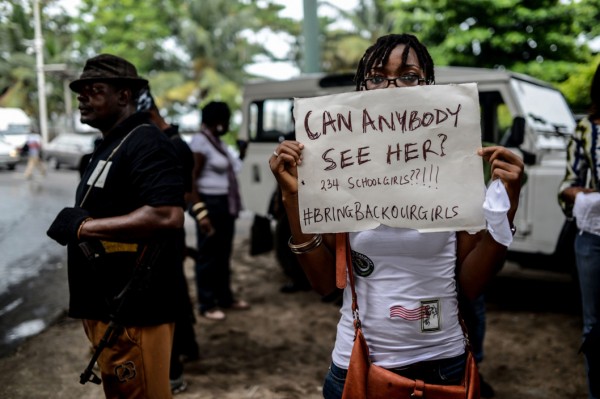
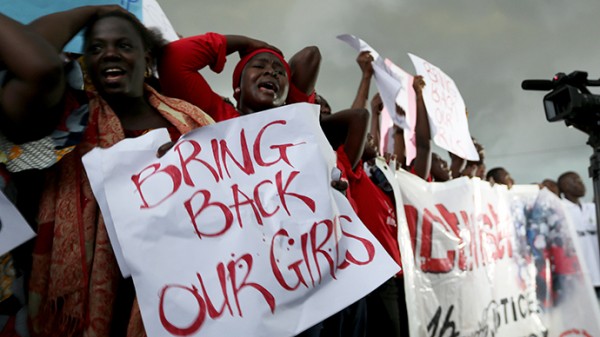

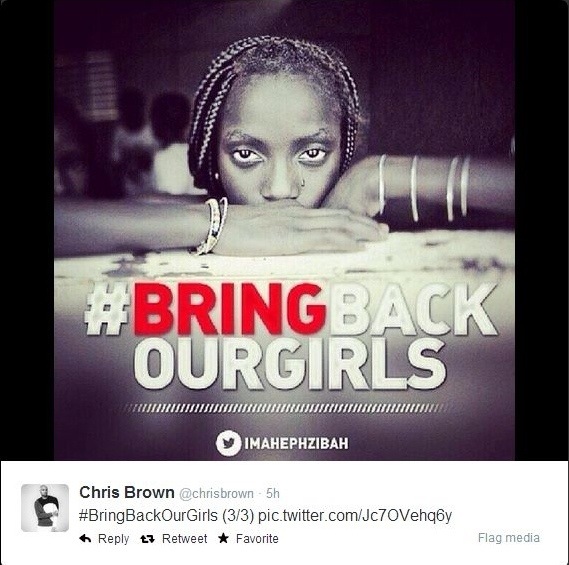
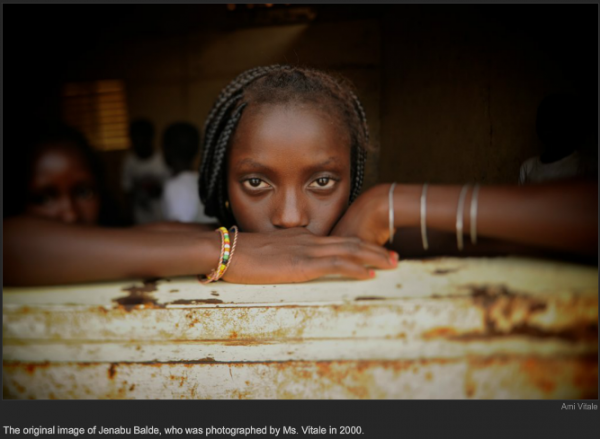
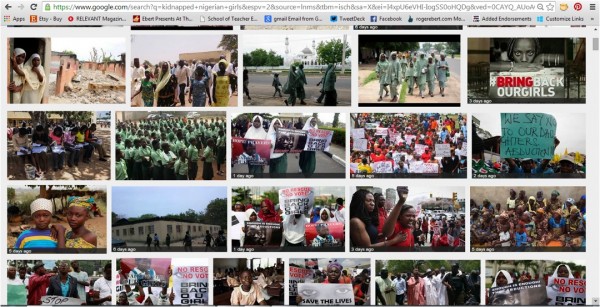
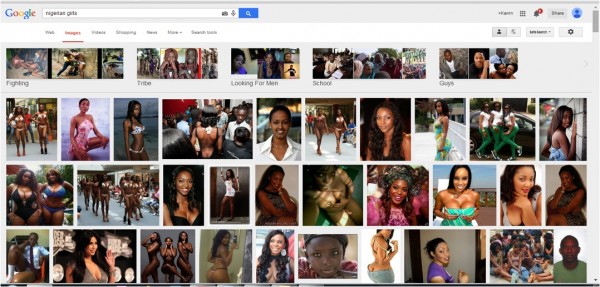
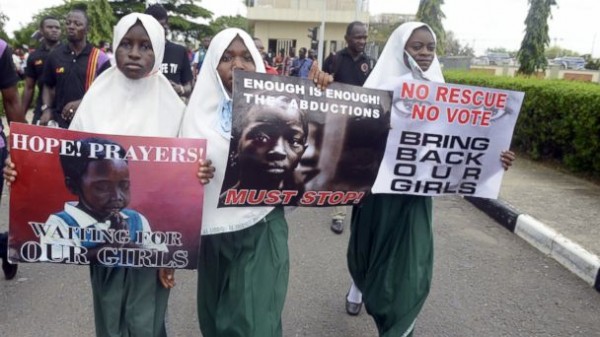
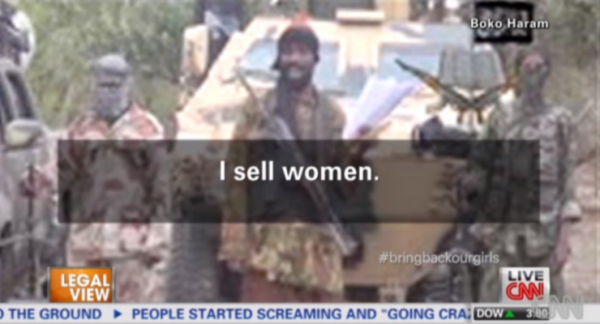
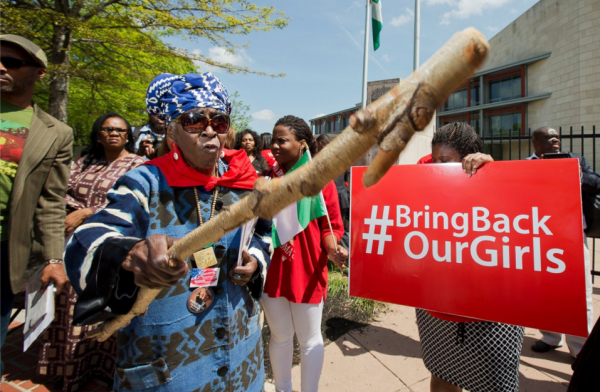
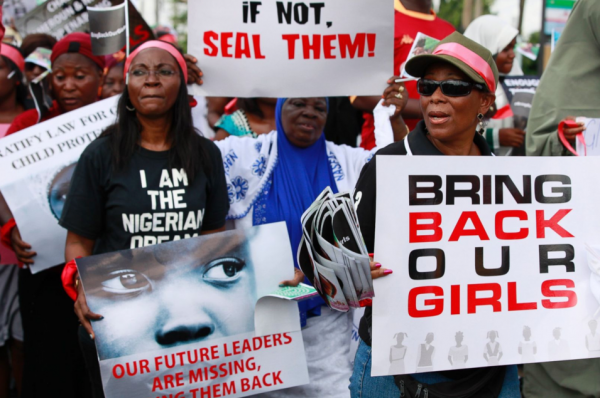
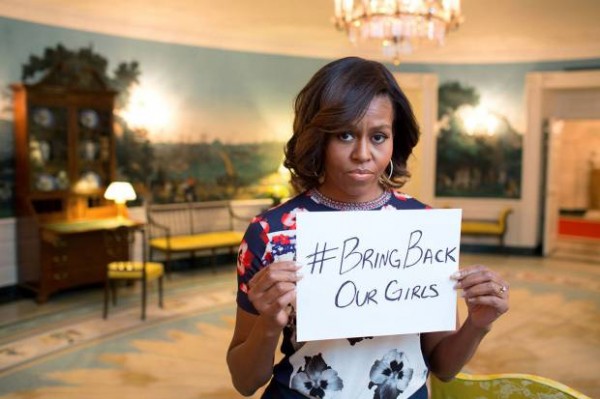

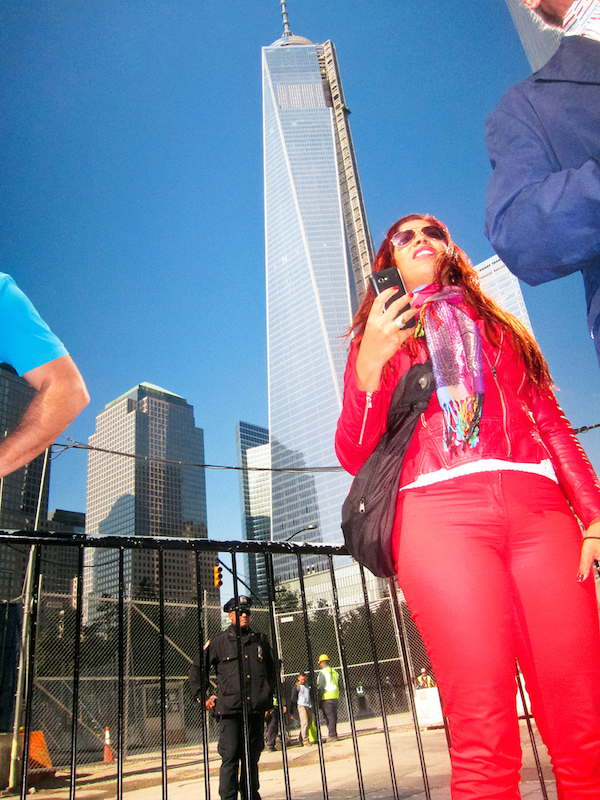
Reactions
Comments Powered by Disqus